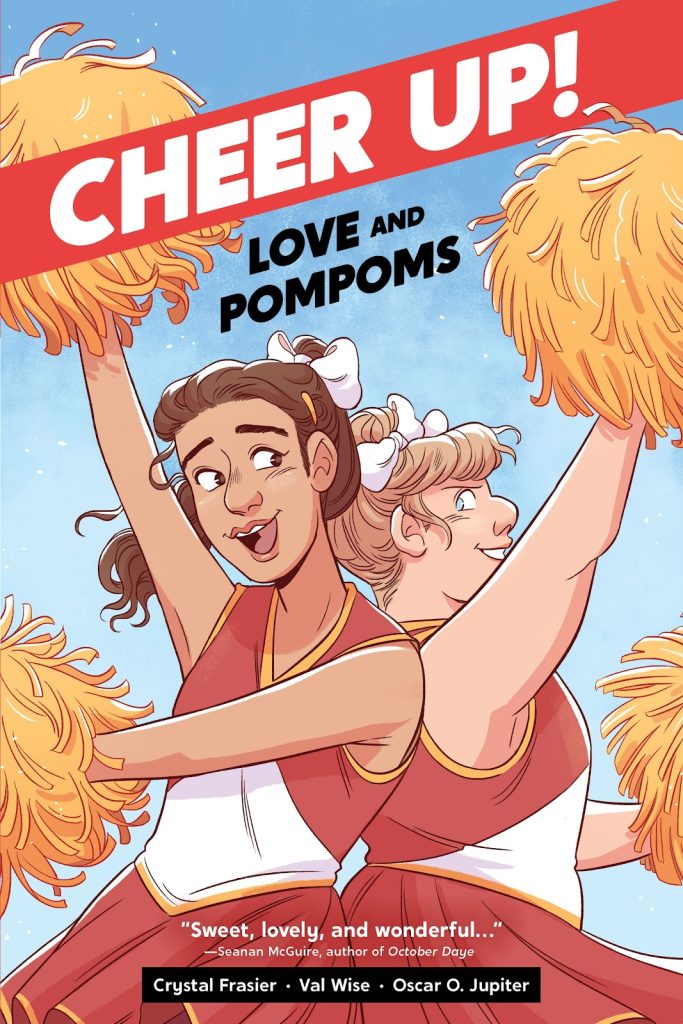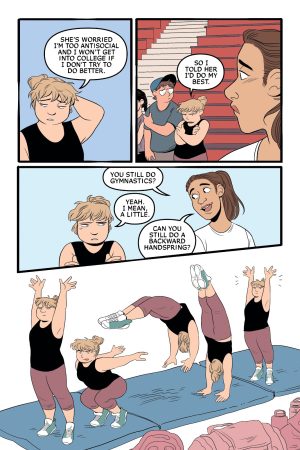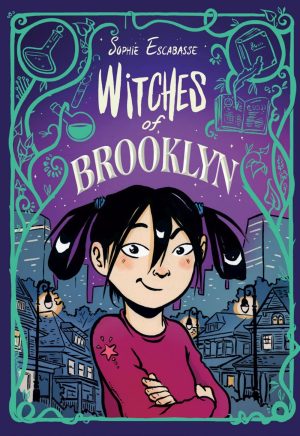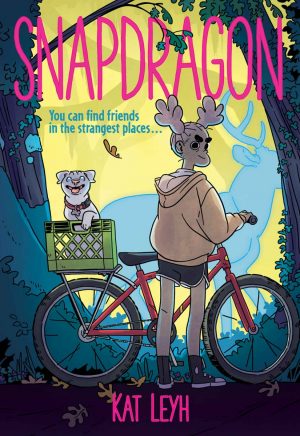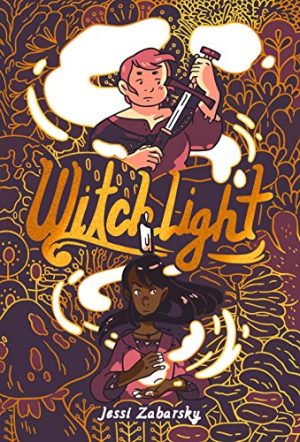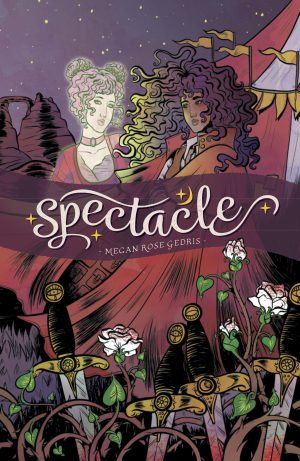Review by Ian Keogh
Annie is applying for colleges, but although her grades are fine the head teacher is concerned she’ll be placed lower in the application order because there’s little in the way of extracurricular activities proving she can get on with other people. That’s because she can’t. Annie is very confident, knows what she wants, and sees other people as a hindrance. Beatrice, by contrast, has to work for her grades, has parents who don’t consider scraping by acceptable, and has all the problems associated with being a high profile transgender teen.
At the start Crystal Fraser seems to be maximising the melodrama by pushing buttons, but after the awkward introductory scenes she injects greater personality. A scene of Beatrice confiding she feels her cheerleading teammates are so concerned with being supportive they don’t actually listen to her indicates Love and Pompoms isn’t going to be a box-ticking exercise after all.
Before then Val Wise’s strong personality based cartooning has ensured attention doesn’t stray. Wise ensures people reflect their given characters, yet still remain basically likeable, which is a fine line to straddle in Annie’s case. He also avoids shortcuts, drawing a bunch of people when a bunch of people are needed, and not missing that even more are required in the backgrounds.
Although she’s resistant, Annie understands her situation, and takes on the suggestions of joining the cheerleading squad, people otherwise at the top of her list to avoid.
There’s a hell of a lot of feeling and understanding transmitted here, and as a book aimed at the young adult market it’s going to make youngsters think. Not just about Beatrice either. Annie hides her body insecurities under her aggressive front, over-protective parents are an issue and there’s boundary-breaching behaviour. It seems a lot to cover in a single graphic novel, but Fraser ensures that what needs to be said is said in a compact way without trivialising the issues or forgetting that readers need to respond to story tensions.
